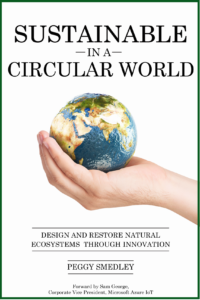If we want to rebuild our infrastructure, we must consider a few key factors, chiefly innovation, which is something I explored in-depth last week. However, another key factor we must consider as we are rebuilding infrastructure and cities is resilience.
The statistics are telling. We know of the 10 years with the most natural disasters, nine were in the last decade. Building on this, we also know the number of natural weather disasters with damages of more than a billion dollars has increased in the last forty years, from an average 3.3 per year in the 1980s to 17+ from 2014–2023.
As we build infrastructure, buildings, and homes, we must consider how we can make them more resilient. Let’s consider the example of earthquakes for a minute, since new research out of Texas A&M University is looking at how retrofitting older buildings can help increase resilience against natural disasters such as earthquakes.
Agent-based modeling enables researchers to analyze a community’s needs following a seismic event. Here’s how it works: agent-based modeling accounts for every attribute within the community to accurately simulate the response to a disaster. Some attributes include:
- Buildings
- Components of electrical power networks
- Water and transportation systems
- Social systems like schools, hospitals, businesses, and households
- The people who live and work within the community
With all this data in hand, a robust simulation is created. The shorter a community’s recovery time, the higher the level of community resilience.
This particular study out of Texas A&M University narrows in on the impact retrofitting residential structures would have to community resilience—although there could be similar studies for schools, hospitals, other commercial buildings, and even infrastructure.
Building on this, researchers are using agent-based models with digital twin models of communities to run simulations and implement realtime data updates during or directly following a disaster.
As we always say here, data is key. Data helps unlock how to do things better in business and in communities. Having data following a natural disaster can ultimately help communities prepare for how to better respond to a natural disaster in the future. Key stakeholders can also respond to disasters better in the future.
This study is simply one example. The bottomline is we need to be better prepared. We need to learn from this uptick in natural disasters to inform a better future. Data just might be the key to help us rebuild with resilience.
Want to tweet about this article? Use hashtags #construction #IoT #sustainability #AI #5G #cloud #edge #futureofwork #infrastructure #resilience


